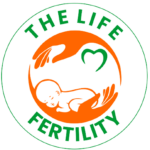Introduction: Understanding IVF Procedures
Starting a family is a deeply personal journey, and sometimes, that journey takes unexpected turns. If you’re reading this, chances are you’re exploring In Vitro Fertilization (IVF) as a way to welcome a child into your life. It’s a big decision, and it’s natural to have questions about what IVF procedures actually involve. So, what exactly is IVF? In the simplest terms, IVF is a process where eggs are fertilized by sperm outside the body, in a laboratory setting. The resulting embryos are then carefully monitored and transferred to the uterus with the hope of achieving a pregnancy. IVF has helped countless individuals and couples overcome infertility challenges and build the families they’ve always dreamed of.
This guide is here to help you understand the various IVF procedures involved in this incredible journey. We’ll break down each step, from the initial consultation to the final embryo transfer, providing clear and accurate information along the way.
II. Initial Consultation and Evaluation (250-300 words)
Taking the first step towards IVF can feel both exciting and a little overwhelming. But rest assured, the initial consultation and evaluation process is designed to provide clarity and guidance as you begin your fertility journey.
Your First Steps: The IVF Consultation
The first consultation is all about getting to know you, your medical history, and your fertility goals. You’ll meet with a fertility specialist who will take the time to understand your unique circumstances and answer any questions you may have. This is your chance to discuss your concerns, explore your options, and build a relationship with your care team.
Diagnostic Testing: Understanding Your Fertility
To create a personalized treatment plan, your fertility specialist will recommend some diagnostic tests. These tests help paint a clearer picture of your reproductive health and identify any potential challenges.
Here are some common tests you might expect:
For women:
Blood tests to check hormone levels, such as follicle-stimulating hormone (FSH) and anti-Müllerian hormone (AMH).
Pelvic ultrasound to assess the ovaries and uterus.
Hysterosalpingogram (HSG) to evaluate the fallopian tubes.
For men:
Semen analysis to evaluate sperm count, motility, and morphology.
Personalized Treatment Plan: Your IVF Journey
Once the test results are in, your fertility specialist will work with you to develop a personalized treatment plan. This plan will outline the specific IVF procedures recommended for you, the timeline, and what you can expect at each stage. Remember, your journey is unique, and your treatment plan will be tailored to your individual needs and goals.
III. Core IVF Procedures
In Vitro Fertilization (IVF) is the cornerstone of assisted reproductive technology (ART). It involves a series of steps where eggs are retrieved from the ovaries, fertilized with sperm in a lab, and then transferred to the uterus. Let’s take a closer look at each of these crucial steps:
Ovarian Stimulation: Encouraging Egg Production
To increase the chances of egg retrieval, fertility medications are used to stimulate the ovaries to produce multiple eggs. This process is called ovarian stimulation.
Egg Retrieval: Collecting the Eggs
Once the eggs have matured, a procedure called egg retrieval is performed to collect the eggs. This is typically done under sedation using ultrasound guidance.
Fertilization: Creating Embryos
The collected eggs are fertilized with sperm in a laboratory setting. This process is called fertilization. In most cases, a technique called intracytoplasmic sperm injection (ICSI) is used, where a single sperm is injected directly into each egg.
Embryo Culture: Monitoring Development
After fertilization, the embryos are placed in a special incubator where they are monitored for growth and development. This process is called embryo culture.
Embryo Transfer: The Final Step
Once the embryos have reached a suitable stage, one or two embryos are carefully transferred to the uterus using a thin catheter. This procedure is called embryo transfer.
Here’s a more detailed look at some additional IVF procedures:
- Preimplantation Genetic Testing (PGT): This involves testing embryos for genetic abnormalities before transfer.
- Assisted Hatching: This technique can help embryos implant by making a tiny opening in the shell surrounding the embryo.
- Frozen Embryo Transfer (FET): This involves transferring frozen embryos created during previous IVF cycles.
Choosing the Right IVF Procedure
The choice of IVF procedures will depend on various factors, including the couple’s individual circumstances, medical history, and treatment goals. A fertility specialist will help you determine the most appropriate course of treatment.
IV. Additional IVF Procedures
In addition to the core IVF procedures, there are several other techniques that may be used in fertility treatment. These procedures can be helpful in specific situations or for couples who have experienced difficulties with previous IVF cycles.
Preimplantation Genetic Testing (PGT): Ensuring Healthy Embryos
Preimplantation genetic testing (PGT) is a type of genetic screening that can be performed on embryos before they are transferred to the uterus. PGT allows couples to identify embryos that are free from genetic abnormalities, increasing the chances of a successful pregnancy and reducing the risk of having a child with a genetic condition.
There are different types of PGT, including:
- PGT-A (Preimplantation Genetic Testing for Aneuploidies): This test screens embryos for the correct number of chromosomes.
- PGT-M (Preimplantation Genetic Testing for Monogenic/Single Gene Diseases): This test screens embryos for specific genetic diseases that are known to run in the family.
- PGT-SR (Preimplantation Genetic Testing for Structural Chromosomal Rearrangements): This test screens embryos for abnormalities in the structure of chromosomes.
PGT can be a valuable tool for couples who have a history of genetic disorders or who have experienced repeated implantation failures.
Assisted Hatching: Helping Embryos Implant
Assisted hatching is a technique that can be used to help embryos implant into the uterus. During this procedure, a tiny hole is made in the zona pellucida, the hard outer shell of the embryo. This can make it easier for the embryo to attach to the lining of the uterus.
Assisted hatching may be recommended for couples who have experienced repeated implantation failures or who have embryos with a thick zona pellucida.
Frozen Embryo Transfer (FET): Using Frozen Embryos
Frozen embryo transfer (FET) is a procedure in which frozen embryos created during previous IVF cycles are transferred to the uterus. This can be a good option for couples who have extra embryos or who want to delay pregnancy.
FET offers several advantages, including:
- Reduced risk of ovarian hyperstimulation syndrome (OHSS): OHSS is a potential side effect of ovarian stimulation during IVF. FET eliminates the need for ovarian stimulation.
- Flexibility: FET allows couples to plan their pregnancy around their lifestyle and schedule.
- Increased chance of success: Some studies suggest that FET may have a higher success rate than fresh embryo transfer.
Choosing the Right IVF Procedures
The choice of IVF procedures will depend on various factors, including the couple’s individual circumstances, medical history, and treatment goals. A fertility specialist can help you determine the most appropriate procedures for your situation.
V. Choosing the Right IVF Procedures
In Vitro Fertilization (IVF) offers a range of procedures to help couples achieve their dream of parenthood. Choosing the right IVF procedure is a crucial decision, and it’s important to work closely with your fertility specialist to determine the most suitable approach for your individual circumstances.
Factors to Consider:
Several factors will influence the choice of IVF procedures, including:
- Age: The age of the woman plays a significant role in determining the success rate of IVF. Younger women generally have better egg quality and higher chances of success.
- Diagnosis: The underlying cause of infertility will determine the most appropriate treatment plan.
- Medical History: Any existing medical conditions or previous fertility treatments may need to be considered when choosing IVF procedures.
- Personal Preferences: Couples may have personal preferences regarding the number of embryos transferred or the use of specific technologies.
A Collaborative Approach:
Selecting the right IVF procedure is a collaborative process between the couple and their fertility specialist. The specialist will assess all relevant factors and recommend the most suitable treatment plan based on their expertise and experience.
Here’s a breakdown of some key factors to consider:
- IVF vs. IUI: IUI (Intrauterine Insemination) is a less invasive procedure that may be recommended for couples with mild male factor infertility or unexplained infertility. IVF is typically recommended for couples with more severe infertility issues or for those who have not succeeded with IUI.
- Fresh vs. Frozen Embryo Transfer: Couples can choose between transferring fresh embryos created during the current cycle or frozen embryos from previous cycles (FET). FET offers flexibility and can reduce the risk of ovarian hyperstimulation syndrome (OHSS).
- Preimplantation Genetic Testing (PGT): PGT can be used to screen embryos for genetic abnormalities before transfer. This may be recommended for couples with a history of genetic disorders or repeated implantation failures.
- Assisted Hatching: This technique can be used to help embryos implant by making a tiny opening in their shell. It may be recommended for couples with recurrent implantation failure.


